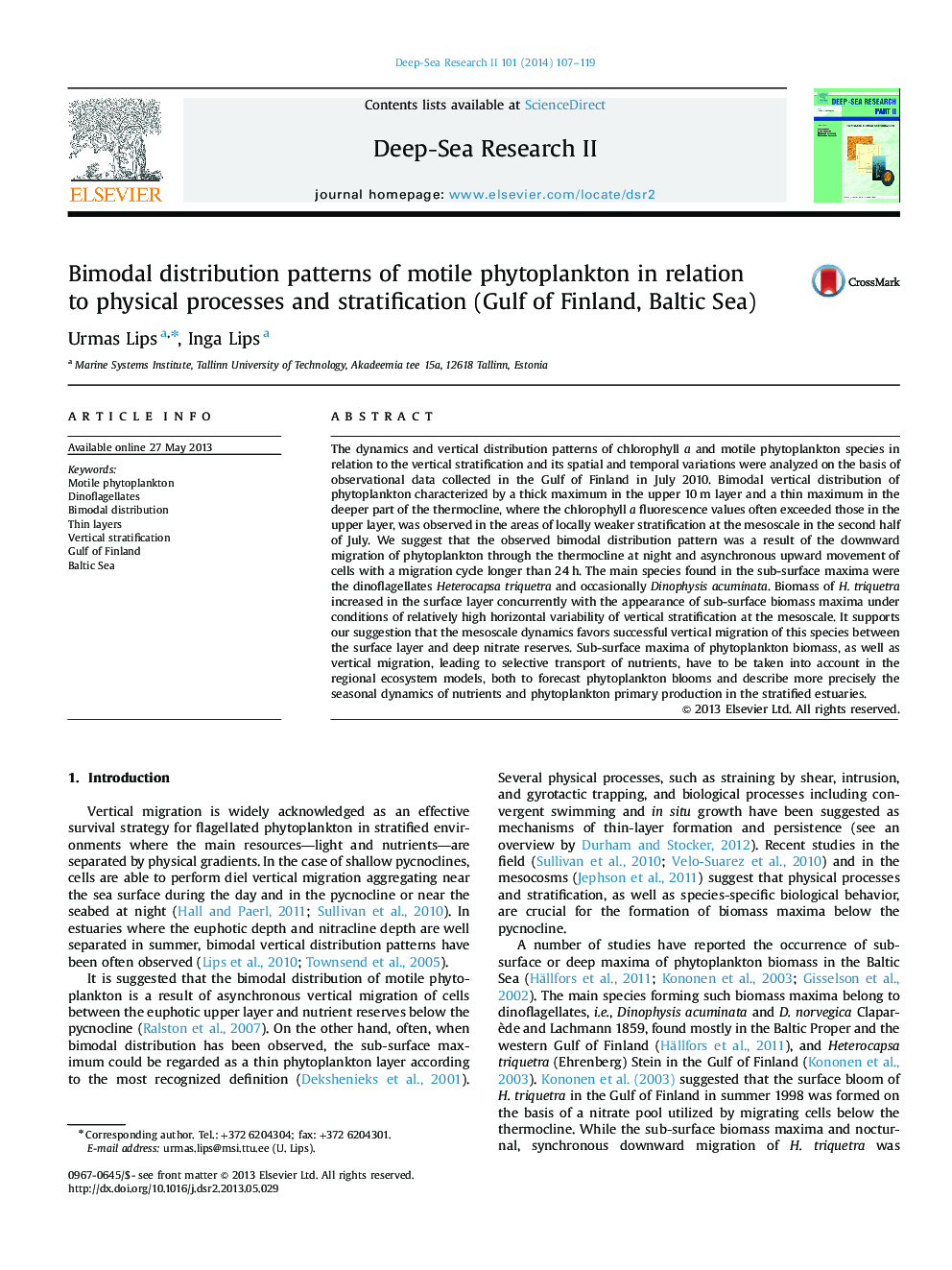| Article ID | Journal | Published Year | Pages | File Type |
|---|---|---|---|---|
| 4536365 | Deep Sea Research Part II: Topical Studies in Oceanography | 2014 | 13 Pages |
Abstract
The dynamics and vertical distribution patterns of chlorophyll a and motile phytoplankton species in relation to the vertical stratification and its spatial and temporal variations were analyzed on the basis of observational data collected in the Gulf of Finland in July 2010. Bimodal vertical distribution of phytoplankton characterized by a thick maximum in the upper 10Â m layer and a thin maximum in the deeper part of the thermocline, where the chlorophyll a fluorescence values often exceeded those in the upper layer, was observed in the areas of locally weaker stratification at the mesoscale in the second half of July. We suggest that the observed bimodal distribution pattern was a result of the downward migration of phytoplankton through the thermocline at night and asynchronous upward movement of cells with a migration cycle longer than 24Â h. The main species found in the sub-surface maxima were the dinoflagellates Heterocapsa triquetra and occasionally Dinophysis acuminata. Biomass of H. triquetra increased in the surface layer concurrently with the appearance of sub-surface biomass maxima under conditions of relatively high horizontal variability of vertical stratification at the mesoscale. It supports our suggestion that the mesoscale dynamics favors successful vertical migration of this species between the surface layer and deep nitrate reserves. Sub-surface maxima of phytoplankton biomass, as well as vertical migration, leading to selective transport of nutrients, have to be taken into account in the regional ecosystem models, both to forecast phytoplankton blooms and describe more precisely the seasonal dynamics of nutrients and phytoplankton primary production in the stratified estuaries.
Keywords
Related Topics
Physical Sciences and Engineering
Earth and Planetary Sciences
Geology
Authors
Urmas Lips, Inga Lips,
